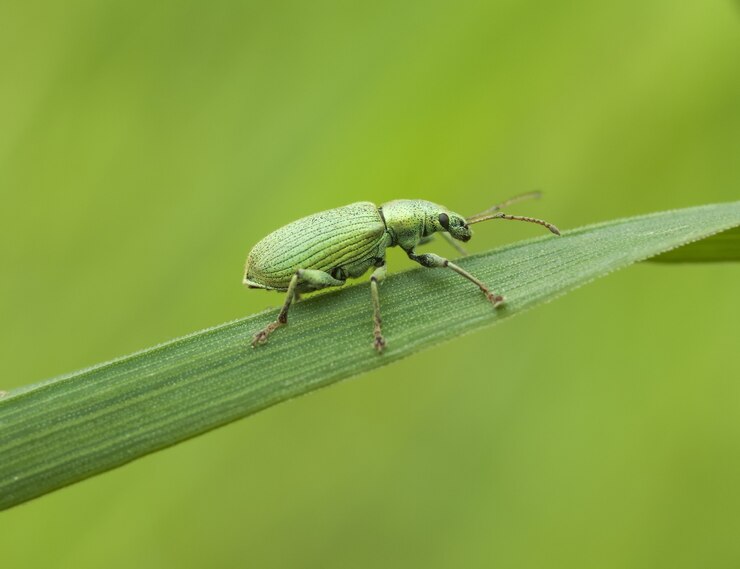Leaf insects are among the most fascinating creatures in the world of invertebrates. Their bodies mimic the appearance of real leaves so precisely that spotting them in the wild can be nearly impossible. These insects represent a perfect blend of camouflage, unique behavior, and exceptional anatomical adaptations. They amaze not only with their looks but also with how expertly they blend into their environment. Below are interesting and educational facts about leaf insects you might not have known.
- Leaf insects belong to the family Phylliidae, a name derived from the Greek word for leaf. Through evolution, their bodies, legs, veins, and even movements have come to resemble real leaves. Some species even mimic damage like holes or tears in leaves. This camouflage helps them avoid predators by remaining virtually invisible.
- These insects are found primarily in the tropical forests of Southeast Asia and Australia. The greatest diversity occurs in Indonesia, Malaysia, and the Philippines. They live high in the tree canopies, where blending in with surrounding foliage is easiest. They are usually active at night.
- Leaf insects are herbivores. They feed on soft plant leaves such as guava, mango, eucalyptus, or mulberry. Their appetite is relatively modest, which helps them stay hidden. While feeding, they often remain still, continuing to resemble a motionless leaf.
- Female leaf insects are significantly larger than males. In some species, females can reach lengths of 10 to 12 centimeters, while males rarely exceed 7 centimeters. Males usually have wings and can fly, whereas females are wingless and have heavier bodies. This sexual dimorphism is typical for many species in this family.
- One of the most remarkable traits of leaf insects is their behavioral camouflage. They not only look like leaves but also move like them. When the wind blows, they sway gently side to side, mimicking the motion of real foliage. This behavior makes them even harder for predators to detect.
- Leaf insects can reproduce both sexually and through parthenogenesis. Females are capable of laying eggs without the involvement of males, and these eggs can still produce viable offspring. Their eggs resemble plant seeds, which is another form of camouflage. Once they fall to the ground, the nymphs climb back up into the trees after hatching.
- The lifespan of leaf insects ranges from 6 to 12 months depending on species and environmental conditions. They go through several molts during their lifetime, each time increasing in size and slightly altering their form. After the final molt, they reach sexual maturity. Females generally live longer than males.
- They do not possess venom or stingers, and their primary defense is invisibility. When threatened, they can shed a limb, which regenerates during a later molt. This ability, known as autotomy, is also seen in lizards. It is an effective survival strategy when escaping predators.
- Leaf insects play an important role in the tropical forest ecosystem. They serve as food for birds, amphibians, and small mammals. They also help regulate plant growth by feeding on leaves in moderation. Their presence is a sign of a healthy, balanced natural environment.
- In captivity, leaf insects have become popular among entomologists and exotic pet enthusiasts. With proper humidity, temperature, and diet, they are relatively easy to keep in terrariums. They are non-aggressive, do not require much space, and have a stunning appearance. This makes them excellent subjects for observation and study.
- Some species of leaf insects have additional body features that mimic leaf veins, fungal spots, or even bite marks. These details are so realistic that even trained biologists may struggle to distinguish them from actual leaves. This level of detail is the result of millions of years of evolutionary refinement. Their camouflage is truly a masterpiece of nature.
- Certain species can change their color depending on the season. During the wet season, they may appear bright green, while in the dry season they turn brownish. This allows them to blend in with their surroundings throughout the year. Such adaptability increases their chances of survival in changing environments.
- Despite their excellent camouflage, leaf insects have natural enemies capable of detecting them. Some bird and monkey species have developed the skills needed to find well-hidden prey. This drives the insects to evolve further, improving their camouflage abilities. Natural selection continues to make them increasingly difficult to spot.
- Leaf insects have ancient origins that trace back to the Mesozoic Era. Fossil records show that similar species existed over 50 million years ago. This proves that camouflage as a survival strategy dates back to the time of dinosaurs. Their body structure has remained remarkably consistent ever since.
Leaf insects are living proof of nature’s ingenuity. These incredible facts reveal a hidden world of creatures that thrive thanks to their unmatched camouflage. They show us that beauty in nature is not always flashy but often lies in the subtle and nearly invisible. Learning about them helps us appreciate the complexity and harmony of the natural world.





